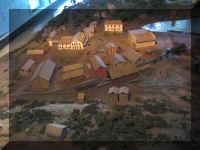
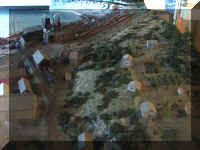
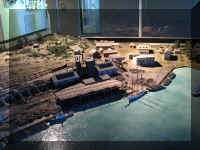
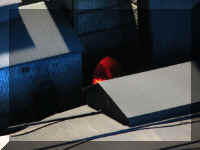
Fayette
Historic State Park, Michigan - 2008 . . .
on
our route to the Pacific Northwest
Updated: 11/30/08
Fayette Historic State Park is located in Michigan's Upper Peninsula. We have driven by on Route 2 many times but never drove down Route 183 on the Garden Peninsula. This time, the town site of Fayette was our first stop on our trip to the Pacific Northwest.
The town of Fayette was named after Fayette Brown, the Jackson Iron company agent who chose the site. The industrial community manufactured charcoal pig iron between 1867 and 1891. Nearly 500 residents lived in or near the town - many emigrating from Canada, the British Isles and northern Europe.
During it's 24 years of operation, Fayette's blast furnaces produced a total of 229,299 tons of iron, using local hardwood forests for fuel and quarrying limestone from the bluffs to purify the iron ore. When the charcoal iron market began to decline the Jackson Iron Company closed it's Fayette smelting operations.
The visitors center presented an audio tape with overhead lights highlighting the location on the diorama being talked about. It was a very detailed diorama including the glowing furnace.
On our way down the path to the Town of Fayette, we could see some buildings through the trees.
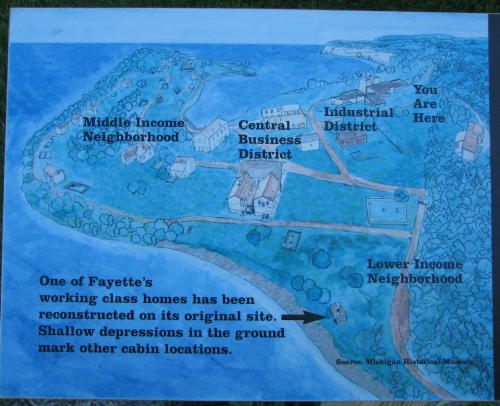
Immediately to our right as we entered the town was the Furnace Complex . That was our first stop.
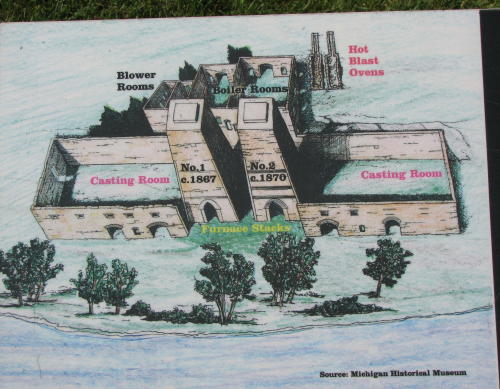
The Fayette smelting operation closed in 1891.
Next to the Furnace Complex was this Charcoal Kiln area - a reconstructed one and what was left of an original kiln.
Snail Shell Harbor viewed from the Furnace Complex . . .
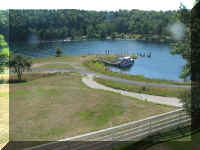
Seldom do you see a room in a home set up in mourning.
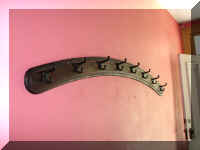
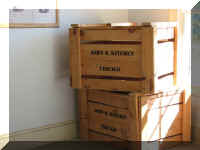
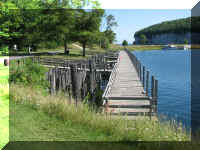
This location is where the grain elevator was located. In addition to shipments of 229,288 tons of iron , grain was its second largest export.
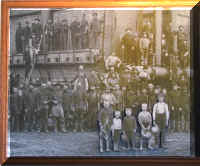 This
photograph of the work crew was in the children's display. That is why the
children are superimposed on the photograph.
This
photograph of the work crew was in the children's display. That is why the
children are superimposed on the photograph.
This photograph shows Stewart Street . . .
Many of the buildings are restored to good condition and demonstrate the lifestyle of the time.
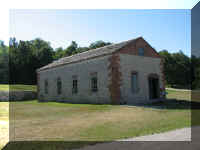
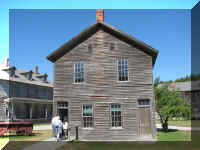
Machine
Shop
Office
Doctor's House
The hotel provided lodging for travelers, single employees and visiting company officials . . .
. . . the hotel had a unique second floor outhouse.
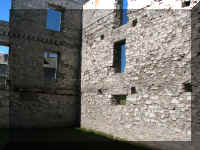
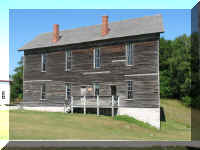
The Music Hall is on the second floor of the Town Hall.
Many performers signed the wall behind the stage.
We understand that some community dances were held there also.
Foundations are all that remain of some buildings.
Park staff reconstructed one of the Laborers' cabins. In the summer when the temperatures were high, the stove was moved from the house to the lean-to.
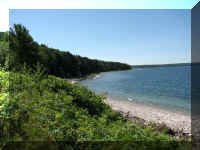
After we returned to camp, we walked down to the shore. We had heard the water crashing against the shore from camp but did not know how close it was. We could see Fayette from the shore.
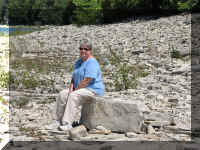
We enjoyed our visit to Fayette. Wear comfortable footwear due to the amount of walking. Allow two and a half hours to see all that is offered.
There is no fee for admission other than the state park entrance fee.
GO BACK TO > > > Pacific Northwest - 2008